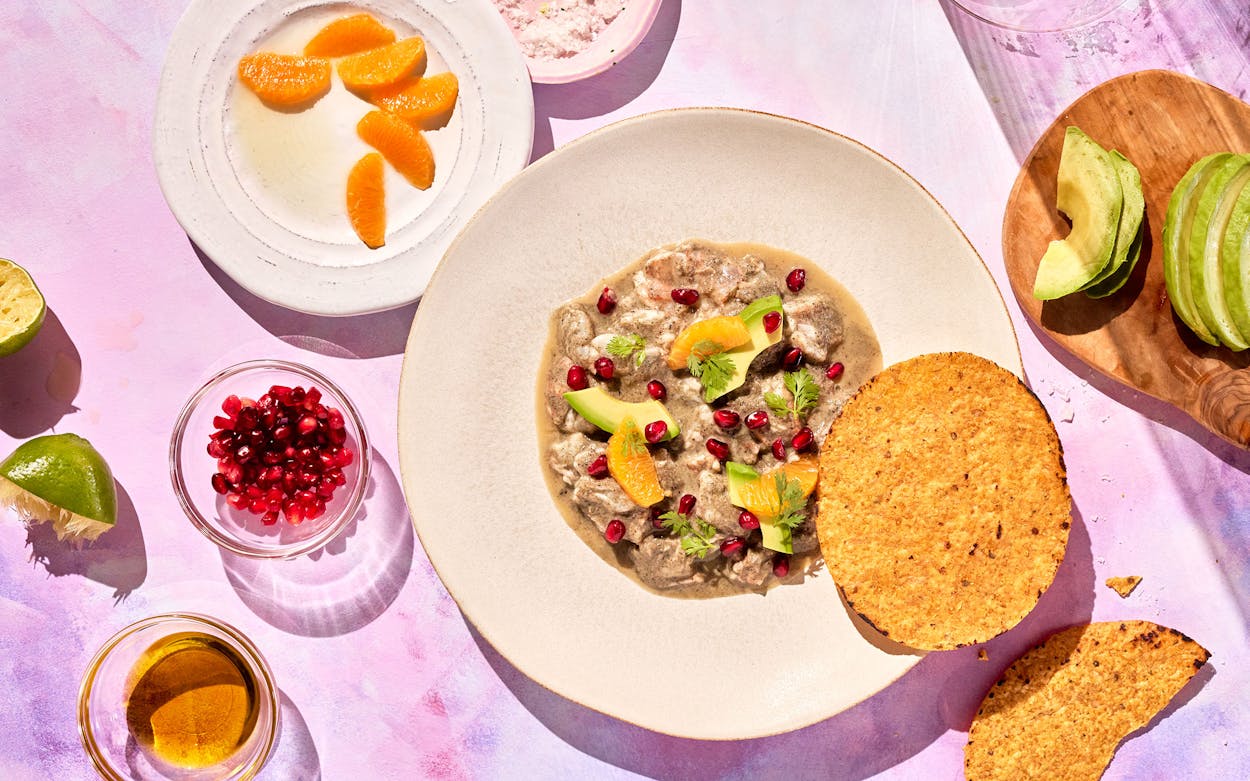Aguachile can be a refreshing dish, but its invigorating effect comes at a price. “Chile water,” as it translates in English, typically consists of raw shrimp and sliced red onions that pickle slightly after being tossed in lime juice and powdered chiltepin, the red, bead-shaped pepper native to northern Mexico and the American Southwest. One chiltepin may rate from 50,000 to 100,000 heat units on the Scoville scale (for comparison, a jalapeño usually measures in the 2,500-to-8,000 range). The origins of the dish rest in the pre-Hispanic era of what is now Sinaloa state, in northwest Mexico.
Sometimes sliced serrano or jalapeño peppers are substituted for their fiery cousin. And some cooks, depending on the region, replace shrimp with another type of seafood or a different protein. The dish can be enjoyed with a knife and fork or spooned into a tortilla. Just don’t confuse aguachile with ceviche: although the Peruvian dish is similar, its seafood base is marinated in citrus juices for twenty minutes or more, while the fish or shrimp in aguachile typically cures for just a few seconds.
At José, in Dallas, executive chef Anastacia Quiñones-Pittman recently offered an aguachile inspired by one she enjoyed in Guadalajara, featuring shrimp cured in an emulsion of olive oil and lime juice, with onion, garlic, cilantro, and charred habanero. Quiñones-Pittman prefers aguachiles made with chiltepins but usually employs milder serranos at her restaurant. Tweaks aside, the chef is assertive about one characteristic of aguachile. “You should sweat,” she says.
Emiliano Marentes, co-owner and executive chef of Elemi, in El Paso, agrees. An ideal aguachile, he says, should have “a lot of really sour and spicy flavor, so it can complement that seafood or the shrimp that you’re adding.” At his establishment, he serves an aguachile of scallops with serranos and jalapeños. The mollusks are dressed in cold-pressed lime juice with snappy cucumber discs, hefty wedges of avocado, and slivers of mouth-puckering red onion.
In the cattle country of northeastern Mexico, aguachile sometimes uses seared or fried thin-cut beef as a base, which some historians believe has precedent in pre-Columbian Indigenous traditions. The ribeye aguachile at Panfila Cantina, in San Antonio, is bathed in a salsa negra of Maggi seasoning, Worcestershire sauce, lime juice, and habaneros. “It’s very well known in Mexico,” Panfila co-owner Charlie Gonzalez says of beef aguachile. I know whatever version I try will put an extra pep in my step—and on my tongue.
This article originally appeared in the December 2023 issue of Texas Monthly with the headline “Like Ceviche, but Hotter.” Subscribe today.
Food styling: Olivia Caminiti
- More About:
- Tex-Mexplainer
- Seafood
- Mexico
- Mexican Food
- San Antonio
- El Paso
- Dallas









